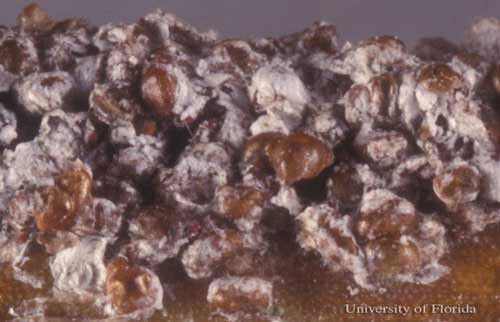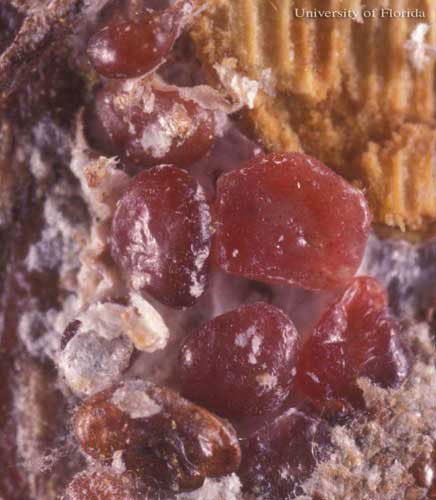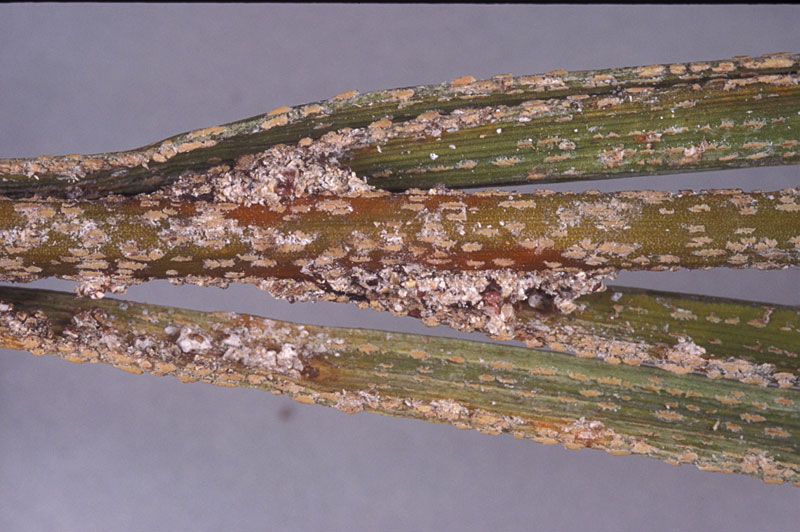Red Date Scale
|
adult females; Photo by Lyle Buss, University of Florida |
|
adult female; Photo by Lyle Buss, University of Florida |
|
red date scale infestation on a palm; Photo by Lyle Buss, University of Florida |
Scientific name
Phoenicococcus marlatti Cockerell
Family
Phoenicococcidae
Synonyms
Sphaerococcus draperi Newstead, Sphaerococcus marlatti Newstead, Phaenococcus marlatti Wardle, Kermicoides minimus Tang
Description
The females are small, around 1.5 mm long, spherical in shape and red or reddish in color. Rather than forming a scale covering, the insects embed themselves in masses of cottony, waxy secretions. Mature females are wingless and legless; mature males have wings but do not feed and are very short-lived. Eggs, when laid, are smooth, oval, and pinkish with a pearly lustre. The first instarinstar:
stage in an insect's life history between any two molts. The newly hatched insect is the first instar, and the adult (imago) is the final instar.
, or crawler, has well-developed legs. Females have 3 instars while males have 5.
Distribution
Native to North Africa and the Middle East but has been found almost everywhere date palms are grown, including Europe, Asia, the Caribbean, North America, South America, and Central America. Within the US, only established in Florida; was eradicated from the southwestern US.
Hosts
Palms: primarily restricted to palms of the genus Phoenix, most particularly date palm (Phoenix dactylifera), but has also been found on desert fan palm (Washingtonia filifera)
Other: has also been reported from Pandanus sp. and Eucalyptus sp.
Additional comments
Palm scales are usually found on the white tissues at the base of fronds and occasionally on exposed roots. Other common names include date palm scale, Marlatt scale, Marlatti scale, red date palm scale.





